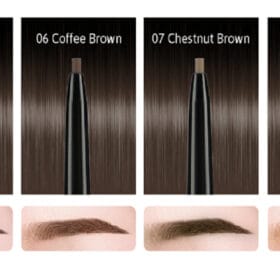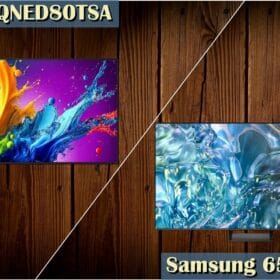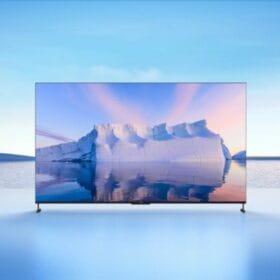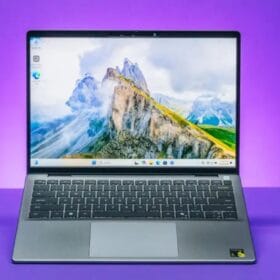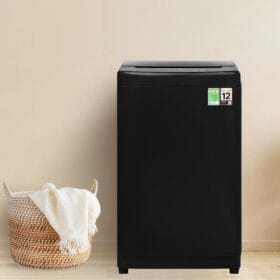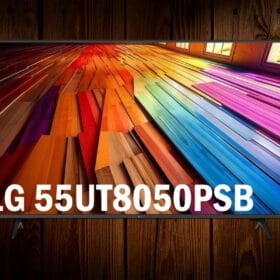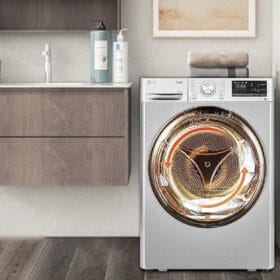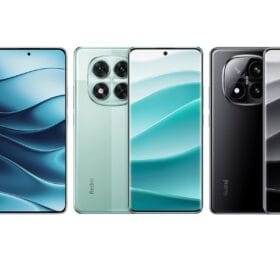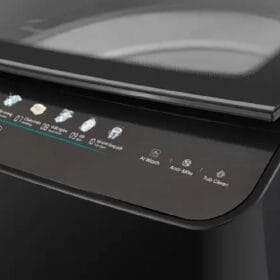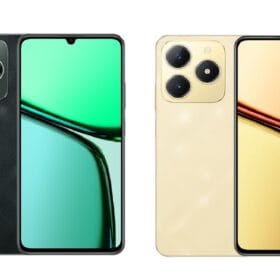If you are learning the difference between the two 4K TV models Samsung 65QN85D and Samsung 65QN85C, the shares in this article will help you make the smartest choice for your entertainment space.
Smart TV Neo QLED Samsung 4K 65 inch 65QN85D is one of the latest Neo QLED 4K TV models introduced in 2024 as the successor of the QN85C 2023 series. Both of these TV models are in the near-high-end segment, Possessing modern features and technology to bring a great viewing experience to users. However, is the Samsung QN85D really a worthwhile upgrade when compared to its predecessor Samsung QN85C?
This article will help you better understand the differences between these two Samsung 4K TV models, thereby making the smartest purchasing decision for your entertainment needs.
1. Regarding the panel and display quality: Samsung 65QN85D has the advantage!
Before delving into each detailed difference, we need to understand that Samsung 65QN85C and Samsung 65QN85D are both 4K Neo QLED TVs. Samsung 65QN85D has an advantage in display quality (Photo: Samsung).(/caption)
However, this VA panel also has some disadvantages. Its viewing angles are often more limited than IPS, meaning that when viewed at an angle, colors may be distorted and contrast reduced. This panel will be a bit inconvenient if you often watch TV with family or friends with many people sitting at different viewing angles.
In contrast, the Samsung 4K 65QN85C smart TV uses an IPS panel with a wider viewing angle, users can watch TV from many different angles while still maintaining the best image quality. Colors will not deviate significantly and brightness will also remain stable, very suitable for family spaces that often have many people watching at the same time.
However, this type of panel usually does not have as good contrast as VA. Blacks may not be as deep and rich, resulting in images that sometimes appear a bit ‘flat’ due to a lack of depth. In addition, the motion handling ability of IPS panels is sometimes not as smooth as VA.
And, due to using different panels, the color and brightness parameters of these two 65-inch Samsung TVs are also different.
Accordingly, Samsung 65QN85D is capable of achieving higher peak brightness and better contrast ratio than Samsung 65QN85C, images also look more vivid, especially in scenes with strong light. Bright and dark details are displayed more clearly, enhancing the realism of displayed content.
2. About image processor and smart features: Samsung 65QN85D is newer, better!
Both of these 65-inch TV models own the same image processing platform based on artificial intelligence (AI) but there are differences in version.
Samsung 65-inch 4K Smart TV 65QN85D is equipped with Neural Quantum 4K AI Gen 2 chip, the latest version in Samsung’s image processing chip line. This processor is not only capable of upgrading the resolution of content to nearly 4K, but also has the ability to analyze and optimize each frame, allowing the TV to adjust contrast, color and sharpness easily. exactly.

ForPro Professional Collection Extra Large Hand Mirror with Handle, 9" W x 12" L, Multi-Purpose Handheld Mirror with Distortion-Free Reflection, Black
$5.99 (as of January 4, 2025 00:26 GMT +00:00 - More infoProduct prices and availability are accurate as of the date/time indicated and are subject to change. Any price and availability information displayed on [relevant Amazon Site(s), as applicable] at the time of purchase will apply to the purchase of this product.)Gladmart Hand Mirror Salon Barber Hairdressing Handheld Mirror with Handle(Square Black 7.4 x 10.3 inches)
$4.97 (as of January 4, 2025 00:26 GMT +00:00 - More infoProduct prices and availability are accurate as of the date/time indicated and are subject to change. Any price and availability information displayed on [relevant Amazon Site(s), as applicable] at the time of purchase will apply to the purchase of this product.)Salon Tray Cart with Storage Platform, Aluminum Tattoo Tray with Wheels Trolley Adjustable Height, Salon Tray Equipment Service Instrument Storage Tray Accessory for Salon & Spa Use, Black
$44.98 (as of January 4, 2025 00:26 GMT +00:00 - More infoProduct prices and availability are accurate as of the date/time indicated and are subject to change. Any price and availability information displayed on [relevant Amazon Site(s), as applicable] at the time of purchase will apply to the purchase of this product.)CLSEVXY Magnifying Handheld Mirror Double Sided, 1X 15X Magnification Hand Mirror, Travel Folding Held Adjustable Rotation Pedestal Makeup Desk Vanity
$9.99 (as of January 4, 2025 00:26 GMT +00:00 - More infoProduct prices and availability are accurate as of the date/time indicated and are subject to change. Any price and availability information displayed on [relevant Amazon Site(s), as applicable] at the time of purchase will apply to the purchase of this product.)Bonnet Hood Hair Dryer Attachment - Soft, Adjustable Extra Large Bonnet Hair Dryer for Speeds Up Drying Time at Home, Easy to Use for Styling, Curling and Deep Conditioning (Pink)
$9.99 (as of January 4, 2025 00:26 GMT +00:00 - More infoProduct prices and availability are accurate as of the date/time indicated and are subject to change. Any price and availability information displayed on [relevant Amazon Site(s), as applicable] at the time of purchase will apply to the purchase of this product.)EARTHLITE BODYWORKER’S CHOICE Massage Table Warmer – Three Heat Settings, Felt Lined Heating Pad (30” x 71”) | One-Year Replacement Guarantee
$38.81 (as of January 4, 2025 00:26 GMT +00:00 - More infoProduct prices and availability are accurate as of the date/time indicated and are subject to change. Any price and availability information displayed on [relevant Amazon Site(s), as applicable] at the time of purchase will apply to the purchase of this product.)BestMassage Massage Table Portable Massage Bed Lash Bed 28In Wide Spa Bed Hight Adjustable 2 Fold Spa Bed Facial Cradle Salon Bed with Non-Woven Bag for Spa Footmassage Facial CareSpa Tattoo
$84.99 (as of January 4, 2025 00:26 GMT +00:00 - More infoProduct prices and availability are accurate as of the date/time indicated and are subject to change. Any price and availability information displayed on [relevant Amazon Site(s), as applicable] at the time of purchase will apply to the purchase of this product.)High Frequency Facial Machine - TUMAKOU Portable Handheld High Frequency Facial Skin Wand Machine with 4 Different Tubes
$36.99 (as of January 4, 2025 00:26 GMT +00:00 - More infoProduct prices and availability are accurate as of the date/time indicated and are subject to change. Any price and availability information displayed on [relevant Amazon Site(s), as applicable] at the time of purchase will apply to the purchase of this product.)FLYHIT Large Towel Warmer for Bathroom - Heated Towel Warmers Bucket, Wood Handle, Auto Shut Off, Fits Up to Two 40"X70" Oversized Towels, Bathrobes, Blankets, Best Ideal for Mother's Gifts
$99.97 (as of January 4, 2025 00:26 GMT +00:00 - More infoProduct prices and availability are accurate as of the date/time indicated and are subject to change. Any price and availability information displayed on [relevant Amazon Site(s), as applicable] at the time of purchase will apply to the purchase of this product.)DilaBee Spray Bottles (4-Pack - 8 Oz) Water Spray Bottle for Hair, Plants, Cleaning Solutions, Cooking, BBQ, Squirt Bottle for Cats, Empty Spray Bottles - BPA-Free - Multicolor
$9.99 (as of January 4, 2025 00:26 GMT +00:00 - More infoProduct prices and availability are accurate as of the date/time indicated and are subject to change. Any price and availability information displayed on [relevant Amazon Site(s), as applicable] at the time of purchase will apply to the purchase of this product.)Meanwhile, the Samsung 65-inch 4K smart TV 65QN85C uses an older version, Neural Quantum 4K. Although it still provides the same top image processing efficiency as above, its optimization ability may not be as good as the 2nd generation. This leads to the overall image quality being somewhat inferior to that of the 65QN85D. .
Both of these 65-inch Samsung TV models run on Tizen OS, Samsung’s own smart operating system with a friendly interface and rich application store. However, Samsung 65QN85D is equipped with the latest Tizen OS 8.0 version of 2024, integrating more smart features and supporting more advanced AI features. With further optimized Samsung AI, the TV can understand and respond to user needs more naturally, providing a smoother and easier interactive experience.
3. Sound and connectivity: Samsung 65QN85C wins!
Sound reproduction also plays an important role in providing a perfect movie watching and gaming experience. Both Samsung 65QN85D and Samsung 65QN85C have high-quality integrated speaker systems, but there are significant differences in capacity and configuration.
The Samsung 65QN85C 4K TV is equipped with a 2.2.2-channel speaker system with an extremely powerful 60W total capacity, creating more diffuse and full sound. With high capacity, the 65QN85C can reproduce powerful sound and vivid effects, suitable for action or sports movie content.

Meanwhile, this is a somewhat ‘reverse’ factor of the Samsung 65QN85D. It only has a 2.2-channel speaker system with a capacity of 40W, one level lower than its predecessor. This also means that the 65QN85D’s sound will not have the full detail and depth of sound like the 65QN85C, especially in scenes with many complex sound effects.
4. Should I buy Samsung 65-inch Neo QLED 4K smart TV 65QN85D or 65QN85C?
Because it is a newer model, it is obvious that the Samsung Neo QLED 4K 65 inch 65QN85D smart TV has a higher price than the Samsung 65QN85C, partly due to upgrades in display technology, processor and smart features. Currently, it has a reference price of about 23.9 million VND, while Samsung 65QN85C is 20.2 million VND.
It is undeniable that both Samsung 65QN85D and Samsung 65QN85C are high quality Neo QLED 4K TV models. If the 65QN85C is a significant upgrade in terms of imaging, then the 65QN85C is still a reasonable choice with distinct advantages in viewing angles and sound.
In general, choosing Samsung 65QN85D or Samsung 65QN85C depends on the needs and budget of each user.
With the above price, the Samsung 65QN85D is considered suitable for users interested in optimal image quality, high contrast, realistic colors as well as advanced AI image processing capabilities. If you are a lover of movies with impressive footage, or are a gamer who needs smoothness in images, then the 65QN85D will satisfy you better.
The Samsung 65QN85C will be a more reasonable choice for those who prioritize wide viewing angles to watch sports, prefer strong sound and have a more limited budget.
Hopefully this article has provided you with the necessary information to make the smartest shopping decision for your entertainment needs.


































